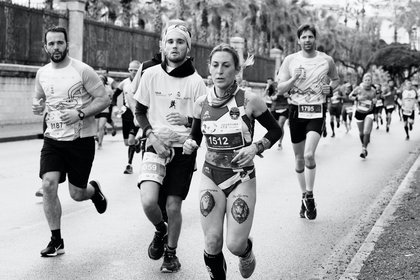When should you start training for an event

As people focus more on their personal health and fitness, they are looking for a new way to push themselves, whether for a cause or just to see the limits of their abilities. This has not only seen more people entering marathons than ever before but an increase in the popularity and number of events that test fitness, some with obstacles, some with different disciplines and some with adverse weather conditions.
With more people looking to take on professional challenges to measure their personal accomplishments, people are turning to online communities for tips on training, nutrition and resting between sessions as well as how to achieve the ultimate goals. One of the most regularly asked questions is when to start their training and how to even begin.
Choose your event

There are so many events out there waiting for people to test their abilities and these can be everything from extended runs like marathons, to other long-distance disciplines like triathlons or decathlons even up to the events that include outlandish obstacles. Knowing where to start can seem overwhelming. The first thing to do is fully research the course- if you are opting for a marathon that is on undulating terrain, you will need to incorporate hill runs into your programme whereas something like the Tough Mudder with obstacles that require upper body strength will need very different preparation.
If it is your first event, try to choose one which other people will join you in. While you may feel a full iron man would be doable in 6 months time, others may not. Have a strong and supportive group around you will not only help you on race day, but also in the lead up to it. Having someone to train with on rainy evenings or celebrate your most recent personal best will help keep you motivated and inspired.
Understand your current fitness

It is fantastic that so many people wish to participate in these challenging events, but while they should be difficult, they should not be impossible. With proper training and enough time, anybody should be able to smash the event of their choice, but that means being realistic with themselves. Corinne Crabtree from Phit and Phat states:
“In my opinion, you need 12 weeks to train if you are new to Tough Mudder endurance style events and 8 weeks if you are physically pretty fit and able to do a half marathon.”
This varies from person to person and their initial level of fitness and there is no hard and fast rule. It is also dependent on the amount of time you can commit to the race. Kelly Roberts from the blog She Can and She Did tells of her own struggles with her own first marathon:
“Running your first marathon is an overwhelming experience. It's all things incredible and equally painful. When I trained for my first marathon I had copious amounts of spare time and I was blissfully ignorant to what was coming my way. I ran my 26.2 six months after I started running and I trained by myself using only articles I found online and my RunKeeper app.”
The time it could take is dependent on the event itself and the training it requires as well as your current adaptions to that skill. For those looking to participate in a triathlon, it will take much more training if you do not know how to swim. Identifying possible weaknesses and addressing them in training is the best way to ensure people do not injure themselves through overconfidence.
Time and effort to commit

Training towards a dedicated goal in a predetermined window of time means you must give the appropriate amount of your week towards that aim. Kelly Roberts admits she had ample free time when training for her first marathon but still struggled:
“I did all of my Monday-Friday runs after work on Northern San Diego’s hills. Saturday’s and Sunday’s were hard to squeeze into my schedule because I often went to hang out with friends in Orange County or Los Angeles. I would set my alarm for 5 or 6 AM so I could run before anyone got up. (Motivating yourself to run 15 miles on a Sunday before you go to Disneyland with your friends is tough.) I didn’t know what I was doing. My long runs were all over the place. My RunKeeper app had a specific plan for me but I would pick and choose what I could fit into my schedule. I was increasing my mileage in odd increments which led to a strained ligament in my leg only a month and a half into my training.”
This can be more difficult if you are training for multiple disciplines and will require more dedication in terms of investment and research. You may need your own weights or specialist gear if you can’t get to the gym regularly and wish to train at home.
Take some time for yourself

While working towards these epic goals can be inspiring and life-affirming, it can also be gruelling and lead you to question your motives. This means in your training routine you have to factor in some time to enjoy life beyond the training. This could involve breaking out of your strict nutritional plan for a night out with work colleagues or resting your tired muscles with a sports massage during a spa break in Yorkshire, but you have to keep up the positive momentum and allow yourself to not only acknowledge what you are trying to achieve but also how far you have come. If you want to find out what foods are beneficial to you when training, we have written an article all about food to boost your metabolism.
Every person who regularly attends these events will have experiences when the day did not go to plan. Laura from Lazy Girl Running recounted her experience of struggling at a previous event:
“Inside the changing tent, I sat down shivering and drinking cherry coke. A woman came into the tent crying. “It was going so well and then I got cramp” she explained. She was crying because she was probably in the same situation as me: I knew I wasn’t going to make the bike cut-off and that I wouldn’t be allowed to finish the race. But I had a promise to myself to keep going until that point, so I staggered off again to find my bike.”
Knowing your body and listening to it, emotionally and physically is the best way to prevent injuries, regardless if that means you do not achieve your goal that day.
